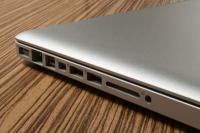Dishwasher does not draw water
Your dishwasher suddenly stops drawing water? You can fix many of the causes of this yourself with a little skill.

What you need:
- simple plumbing tool
- gentle cleaning agents
Possible causes if the dishwasher does not draw water
- As quickly as the problem of a defective dishwasher is to be resolved, a list must first be processed. This list includes very typical and sometimes trivial causes. Let's start with the connections. Are the water connection and the socket in good condition?
© Benjamin Roch - Door contact can also be fatal. If you have a blockage there, no washing process will start.
© Benjamin Roch - The sieve should also be free, but it is often and willingly greasy. The water tank could be caked with residue from cleaning chemicals.
© Benjamin Roch - The dishwasher doesn't draw any water yet? Then the technical diagnosis can go into more detail and the inner workings of the machine can be exposed. All you need is simple plumbing tools. The machine must first be disconnected from the electrical connection.
© Benjamin Roch - A frequent problem child is the solenoid valve. Check whether the solenoid valve is drawing voltage.
- Then it goes to the pressure switch. The instructions for the dishwasher should indicate the optimum pressure. The same applies to the heating and thermostat.
- Next up is the impeller. You can check by hand whether it is moving freely.
Upholstery cleaning tips
Upholstered furniture should be cleaned from time to time, even if it does not stain ...
The dishwasher does not draw water - what to do?
- Dirt and debris. The dishwasher doesn't draw any water? Then these are the most common threats to the components. Therefore, your own repair attempts usually consist of removing the component and thoroughly cleaning it with gentle agents from specialist dealers.
- Attention should be paid to the fat-soluble effect. A solenoid valve that you can remove from residues might have already been given up by the technician. Such cleaning can also be carried out with the various tubes.
- Damaged hoses may need to be completely replaced.
- Clean or replace. There are really only two main ways of repairing a dishwasher yourself.
- You can expect a more serious defect if all of your tests are unsuccessful. Now a technician has to be called in. However, if the repair is successful, you can reduce the risk of future problems.
- The sieve and pump must be cleaned regularly. The whole machine can be rinsed from time to time at a high temperature. The cleaning agents used are best as gentle as possible.
How helpful do you find this article?


